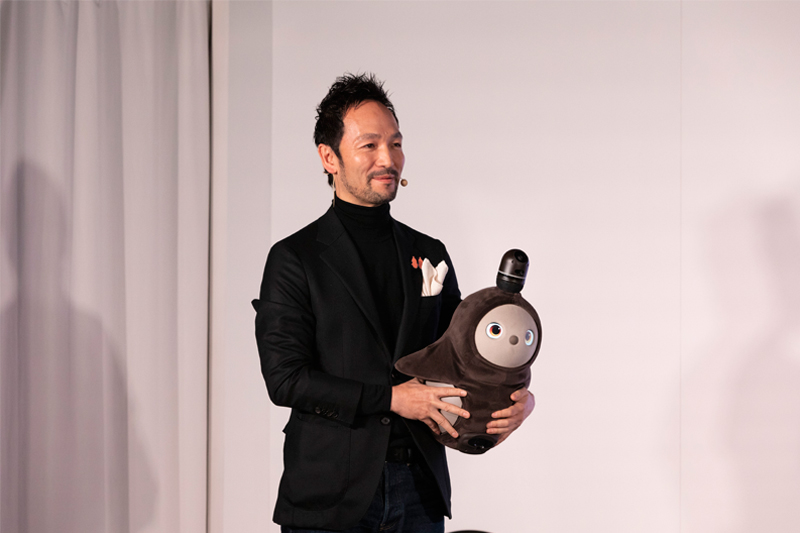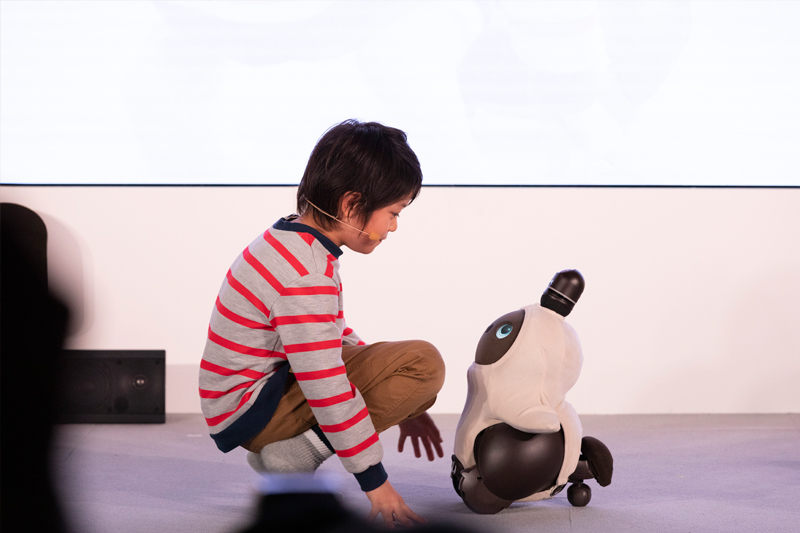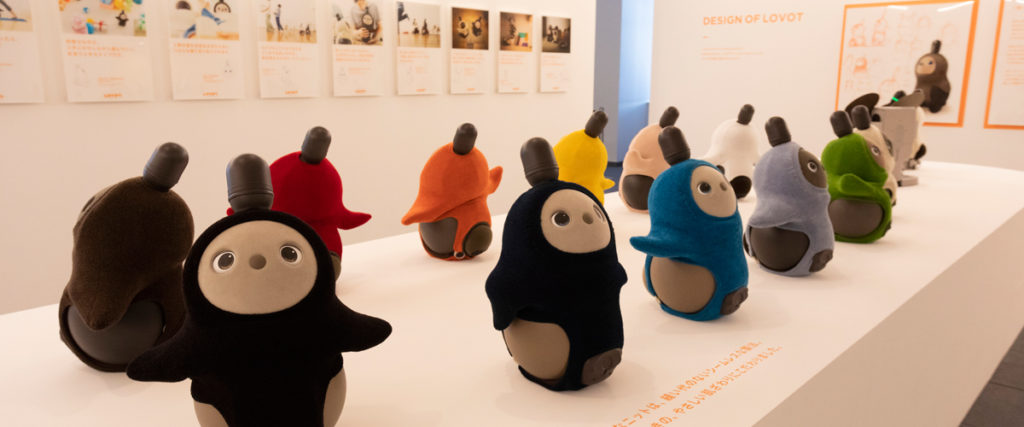It’s fluffy and it craves attention, but most importantly, it loves you. Read on to find out how the Japanese robotics startup Groove X wants to bridge the gap between technology and happiness with their ‘Lovot.’
Japan has always played a central role in the development of robots, giving the world game-changing inventions such as the first bipedal robot, Honda’s E0, in 1986, the healthcare robot RI MAN in 2006, and most recently Erica, a humanoid robot developed in 2018 that’s set to replace news anchors and converse in real time. Now, however, robotics has been taken in a new direction thanks to Kaname Hayashi, CEO of Japanese startup Groove X. Struck by what he saw as a lack of emotional engagement in today’s tech-driven world, he decided to make a robot with absolutely no practical purpose at all. Instead, Kaname’s Lovot, a small, cuddly creature, has been designed purely to evoke an emotive response. Having just won best robot at CES, the world’s biggest tech show, the Japanese entrepreneur wants to bridge the gap between our tech-driven lives and our happiness. He talked Hive Life through how he plans to do that.

For Kaname, the problem was clear. “I saw that machines working on behalf of people don’t always make them happy and I wondered if something could be done about it,” he explains of his mission to develop technology that helps with emotional fulfilment. The answer, it turns out, was lying about all around him. “Pet dogs and cats are loved even if they don’t work for people. They recognise people and move to people, only to be completely dependent and get in the way of them. But, that’s exactly why we feel happy. From there, I thought about whether it would be possible to heal and cheer people up by having robots that similarly can’t function without them,” he continues. The concept developed from there. What if there was a robot that wasn’t designed for any functional task or purpose, but purely for emotional interactions and benefits – ie, one mimicking a pet. And so, Lovot was born.
You might also like Meditation Health App MindFi Could Save Your Life

Being an ex-developer of Softbank’s ‘Pepper,’ – a robot released in 2014 that gained fame through its humanoid design and was considered revolutionary for its ability to read emotions through facial expressions and voice tones – Kaname had the skills and technical know-how to develop his new pet. Still, finding the budget to do so, especially since Lovot was being designed with no practical purpose in mind, was challenging. “If a robot can work in the place of people, it’s easy to estimate the effect and budget,” he explains. However, “Robots like Lovot require large resources and have difficult market forecasts.” Nonetheless, Groove X secured 8 billion yen (approx USD 73 million) in Series A funding by early 2018 via notable investors such as Mirai Creation Fund and the Innovation Network Corporation of Japan, soon putting an end to any development difficulties.

Adopting the persona of a pet, Lovot certainly looks the part. With big, cute eyes and a furry coat that resembles a seal/bear cub hybrid on wheels, its makers are extremely proud of its capabilities. Thanks to its facial recognition technology, a Lovot can remember exactly who it’s looking at. Following you around, it demands love and attention, and thanks to a body full of sensors, the ‘pet’ can become visibly happy and react when you pick it up, tickle or hug it. All this is made possible thanks to Groove X’s ‘Emotional Robotics.’ Each Lovot has 10+ processing units and more than 50 sensors that make up its ‘brain,’ enabling it to emulate the behavioural patterns of real organisms, forge emotional connections and react in real time. So lifelike are these reactions that a Lovot will even get jealous if they see you giving another robot more attention. They are expected to wheel through their first homes from late 2019 with pre-orders already being taken on Groove X’s website for a JPY 20,000 deposit.
For all its cutesy quirks, a Lovot, at heart, is intended to be much more than a gimmick. “Lovot’s role is to provide value to people’s lives and make them healthier,” says Kaname. And, according to him, the benefits for mental health could be enormous. “While we say that Lovot is ‘not useful’ in the sense that it doesn’t work on behalf of people, it is, in fact, ‘useful’ because it can do things that people can not easily do, from emotional education for children to caring for those with dementia.” Through the simple acts of providing companionship and demanding care, Kaname’s hope is that these tiny robots can help bring happiness and banish loneliness. As he puts it, “The moment Lovots arrive in your home, you can begin to enjoy a little more love in your life.”
Related Articles
Cutting-Edge 3D Holograms That Will Revolutionise Communication





